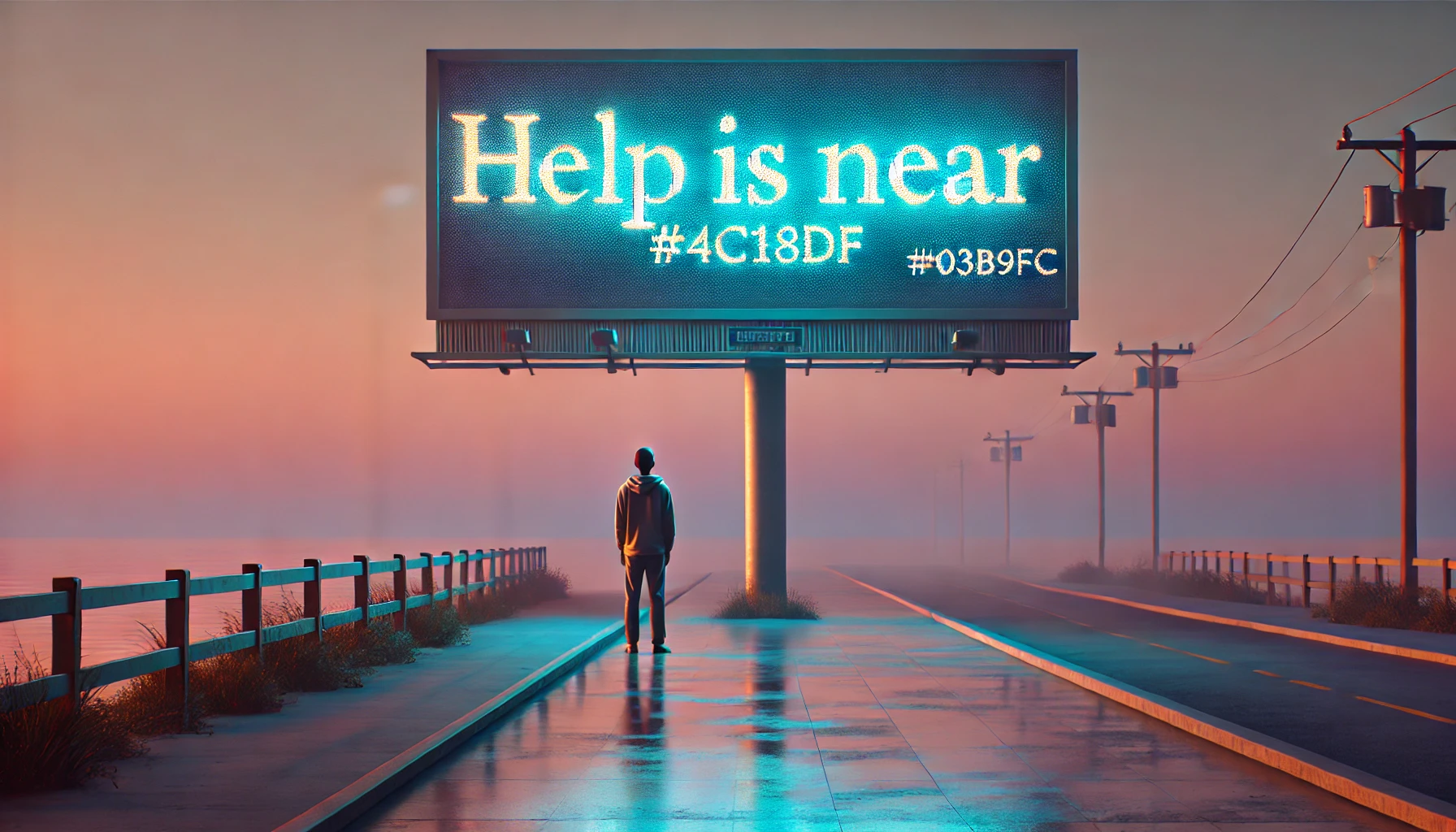
Optimizing Landing Pages for Drug Rehab PPC Campaigns: Best Practices for Increased Conversions
Table of Contents
landing page optimization for drug rehab
Understanding the Importance of PPC Campaigns for Drug Rehab Centers
Why Pay-Per-Click (PPC) Advertising Works for Drug Rehab Centers
Pay-Per-Click (PPC) advertising is a powerful tool for drug rehab centers. PPC campaigns provide instant visibility by placing your ads at the top of search engine results. With the right strategy, this targeted exposure can attract individuals actively searching for addiction treatment options. By reaching out to potential clients in need of help, rehab centers can increase their admission rates and provide crucial services.
PPC is especially effective because it allows you to target specific keywords that your audience is searching for, such as "drug rehab near me" or "addiction treatment centers." This direct targeting maximizes the chances of conversion by focusing on users who are most likely to need your services. According to research by the American Economic Association, businesses make an average of $2 in revenue for every $1 they spend on Google Ads. Of course, results vary from business to business, although all businesses want to increase their returns.
Additionally, PPC offers flexibility in terms of budget. Rehab centers can set a daily limit on ad spend, making it easier to manage costs and see a return on investment. For facilities operating on tight margins, this is an efficient way to acquire new patients without risking financial overreach.
How PPC Campaigns Drive Increased Conversions and Admissions for Addiction Treatment
One of the biggest benefits of PPC campaigns is their ability to drive high-intent traffic to your site. When someone searches for addiction treatment, they are typically in immediate need of help, making them more likely to convert into an actual patient. PPC ads guide these users directly to a landing page with information about your services, enabling you to capture leads quickly and effectively.
Conversions are further optimized through remarketing strategies. By retargeting individuals who have previously visited your site, you increase the chances of converting visitors who didn’t initially take action. Mailchimp data shows that visitors who are retargeted with display ads are 70% more likely to convert on your website.
PPC also allows for data-driven adjustments. Through ongoing monitoring, you can tweak your ad copy, landing page design, and keyword targeting to improve performance and increase conversion rates. For addiction treatment centers, this can mean more admissions, helping you maximize your return on investment.
Why Landing Page Optimization is Critical for Drug Rehab PPC Success
Role of Landing Pages in Optimizing Conversions for Drug Rehab PPC
A well-optimized landing page is essential for the success of any PPC campaign, especially in drug rehab. Landing pages serve as the final step in guiding potential clients from interest to conversion. The moment a user clicks on your ad, they should be met with a page that directly addresses their needs, provides clear information, and encourages them to take action.
Landing page optimization increases conversions by ensuring that every element on the page — from headlines to forms — is designed to capture the user’s attention and prompt them to engage. According to HubSpot, companies with 10-15 landing pages see up to 55% more conversions compared to those with fewer.
But how can a landing page truly make a difference? It’s all about relevance and focus. Your PPC ad promises a solution to the user’s problem, and your landing page must deliver that solution quickly and effectively. A mismatch between the ad message and the landing page can lead to high bounce rates and lost leads.
Importance of Message Alignment Between PPC Ads and Landing Pages
When users click on a PPC ad, they expect consistency between the ad and the landing page. Message alignment ensures continuity, providing users with a seamless experience. If your ad promotes “immediate admissions for drug rehab,” your landing page must emphasize that same promise with a clear call to action and detailed information on how to access admissions.
This alignment isn’t just about words — it’s about visual consistency and overall user experience. The design elements, tone, and structure of your landing page should mirror the expectations set by the ad. For example, if your ad features calming imagery and focuses on compassionate care, your landing page should follow suit, creating a cohesive journey that reassures visitors they are in the right place.

Key Elements of High-Converting Landing Pages for Addiction Treatment Centers
Crafting Clear, Relevant, and Engaging Headlines
A headline is the first thing users notice when they land on your page. A clear and relevant headline can significantly impact whether visitors stay on your page or click away. For drug rehab centers, your headline must immediately address the pain points of potential clients. Something like “Start Your Recovery Today – Immediate Admission Available” directly speaks to the urgency of addiction treatment.
Engaging headlines increase time spent on the page, and this is crucial because the longer visitors stay, the more likely they are to convert. Research shows that users typically spend just 10-20 seconds on a website before deciding to leave or stay. A headline that captures attention right away ensures that visitors are hooked and more likely to explore the rest of the page.
Best Practices for Strong Calls-to-Action (CTAs) to Optimize Conversions
Once your headline grabs attention, the next crucial element is your call-to-action (CTA). A strong CTA guides the user to the next step — whether that’s filling out a form, calling for more information, or scheduling a consultation. The best CTAs are clear, concise, and action-oriented. Phrases like “Get Help Now” or “Speak with a Counselor Today” work well because they communicate urgency and direct action.
CTAs should be prominently displayed and stand out visually on the page. Users should never have to scroll endlessly to find how to take action. Studies suggest that using personalized CTAs can improve conversion rates by up to 42%.
Implementing Minimalist Design to Enhance User Experience and Drive Results
Less is often more when it comes to landing page design. A minimalist layout that avoids clutter and focuses on the essentials makes it easier for users to navigate and find the information they need. For addiction treatment centers, a clean, distraction-free page can increase trust and reduce friction in the decision-making process.
Minimalist design also enhances page load speed, which directly impacts conversions. Pages that load within 1-3 seconds have an average bounce rate increases 32%, but as load time increases to 5 seconds, the bounce rate rises to 90% . By simplifying your design, you not only create a better user experience but also improve the performance of your PPC campaign.
Mobile Optimization: Ensuring Landing Pages Are User-Friendly Across Devices
Why Mobile-Friendly Landing Pages Matter for Drug Rehab PPC Campaigns
Mobile optimization is no longer optional — it’s essential. Over 50% of online searches come from mobile devices, meaning your landing pages must be optimized for smartphones and tablets. For drug rehab centers, this is particularly important because many individuals in need of help may be searching for treatment options on the go. A mobile-friendly landing page ensures that potential clients can access your services quickly and easily, regardless of their device.
A responsive design adapts to any screen size, ensuring that the content, images, and CTAs remain clear and easy to interact with. If your page isn’t optimized for mobile, users may struggle with small fonts, distorted images, or unresponsive buttons. The result? Higher bounce rates and lost conversions. In fact, research from Google shows that 53% of mobile users abandon a site if it takes longer than 3 seconds to load .
Beyond speed, mobile-friendly landing pages improve user experience by reducing friction. By making it easy for users to navigate your page and take action, you increase the chances of converting mobile traffic into leads.
Designing Responsive Landing Pages to Maximize Conversions on All Devices
A well-designed responsive landing page automatically adjusts its layout, images, and text to fit the device it’s being viewed on. Responsive design isn’t just about appearance — it’s about functionality. Forms should be easy to fill out, buttons should be large enough to tap, and content should be concise to fit smaller screens.
For drug rehab PPC campaigns, responsive design ensures that your landing pages deliver a seamless experience across all devices. Users won’t have to zoom in to read the text or struggle with an unresponsive CTA button. This accessibility translates into higher conversion rates, as users are more likely to engage with a page that works smoothly on their preferred device.
Mobile optimization also impacts SEO. Google prioritizes mobile-friendly sites in its search rankings, which means optimizing your landing page for mobile can improve your visibility in search results. This is crucial for PPC success, as a higher search ranking can lead to more clicks and conversions.

A/B Testing Strategies to Optimize Drug Rehab PPC Campaigns
What is A/B Testing and Why It’s Important for PPC Success
A/B testing, or split testing, is a method of comparing two versions of a landing page to see which one performs better. For drug rehab PPC campaigns, this is a critical tool in optimizing landing pages and improving conversion rates. By testing elements like headlines, CTAs, and images, you can identify what resonates most with your audience and makes them more likely to convert.
A/B testing allows for data-driven decisions rather than relying on guesswork. It helps you discover what works best for your unique audience. For instance, a rehab center might test two different headlines: one emphasizing “immediate help” and another focusing on “confidential care.” By comparing the results, you can determine which headline drives more engagement and ultimately leads to more admissions.
Continuous testing leads to improvement. A one-time test might provide useful insights, but the true power of A/B testing comes from regular experimentation. Each test refines your landing page further, optimizing it for maximum conversions. Companies that run A/B tests can improve their conversion rates.
How to Use A/B Test Results to Continuously Improve Landing Page Conversions
Once you have conducted A/B tests, the next step is to analyze the results and make data-backed improvements. If one version of your landing page consistently outperforms the other, it’s time to implement those changes permanently. For example, if a CTA with the phrase “Get Help Now” converts at a higher rate than “Contact Us Today,” you should use the more effective version across all campaigns.
A/B testing doesn’t end after one round. The process should be continuous, as trends and user preferences evolve. By consistently testing new variables — whether it’s a different color for your CTA button or a new image on your landing page — you can keep refining your strategy to stay ahead of the competition and maintain high conversion rates.

Leveraging Trust Signals and Social Proof for Increased Conversions
Using Testimonials, Certifications, and Reviews to Boost Conversions
In the highly sensitive field of addiction treatment, trust is paramount. Trust signals, such as testimonials, certifications, and reviews, can make a significant difference in whether a potential client chooses your rehab center. Including testimonials from former patients or their families on your landing page provides reassurance to those seeking help. They see that others in similar situations have found success at your facility, which builds confidence.
Certifications and accreditations are another powerful trust signal. Displaying logos from recognized healthcare or addiction treatment authorities, such as the Joint Commission or CARF, helps visitors feel secure in the knowledge that your rehab center meets industry standards. Similarly, including reviews on your landing page adds credibility and enhances your center’s reputation. A report by Enterpreneur found that 88% of consumers trust online reviews as much as personal recommendations.
How Social Proof Enhances Trust and Improves Drug Rehab Center Results
Social proof is a psychological phenomenon where people follow the actions of others, assuming their choices are correct. In the context of drug rehab PPC campaigns, social proof can be a powerful motivator for conversions. By showcasing how many patients you’ve successfully treated or including patient success stories, you create a sense of trust and legitimacy.
For example, a simple phrase like “Over 1,000 families helped” gives visitors the impression that your center is experienced and trustworthy. Numbers add credibility and help potential clients feel more confident in choosing your services. Including social proof can increase conversion rates by up to 15%, making it a critical element for drug rehab PPC success.
Optimizing User Experience to Maximize PPC Campaign Results
Enhancing Page Load Speed to Boost Conversions and User Experience
Page load speed is critical in the success of PPC campaigns. Studies show that if a page takes more than 3 seconds to load, 53% of visitors will abandon it, which means missed opportunities for conversions. For drug rehab centers, where potential clients are often in urgent need of help, a slow-loading page can result in frustration and lost trust. Ensuring your landing pages load quickly can significantly improve user experience and increase conversions.
A fast-loading page not only keeps users engaged but also improves your Google Quality Score, which affects your PPC ad ranking and cost-per-click (CPC). Google prioritizes websites that offer good user experiences, and load speed is a major factor in this. By optimizing elements like image size, reducing unnecessary scripts, and enabling browser caching, you can cut download times and improve performance.
Speed also influences trust. A quick-loading page feels more professional, giving visitors confidence that they are dealing with a competent, reliable treatment center. Speed should always be a top priority for any drug rehab landing page.
Reducing Friction in the User Journey to Improve PPC Conversion Rates
Friction refers to anything that slows down or complicates a user’s journey on your website. The more friction points your landing page has, the more likely users are to abandon the page without converting. For drug rehab PPC campaigns, this can mean losing out on crucial admissions.
Common sources of friction include long forms, unclear navigation, or too many distractions on the page. Simplifying the user experience is key. Limit form fields to only the most essential information, such as name and contact details. Offering users the option to call directly through a visible phone number can also reduce friction and improve conversions, particularly for mobile users.
Frictionless experiences guide visitors seamlessly from the ad click to conversion. Clear CTAs, easily accessible contact methods, and minimal distractions all work together to create a smoother journey for the user. The goal is to make it as easy as possible for potential clients to get the information they need and reach out for help.
Google Analytics is a tool to track bounce rates, load times, and other user experience metrics.

Best Practices for Lead Generation in Drug Rehab PPC Advertising
Effective Strategies for Capturing Leads Through PPC and Landing Pages
Lead generation is the ultimate goal of any PPC campaign for drug rehab centers. Generating high-quality leads means capturing contact information from individuals who are genuinely interested in your services and likely to convert into admissions. One of the most effective ways to capture leads is through well-placed forms on your landing pages. These forms should be easy to fill out and ask for minimal information, such as name, phone number, and a brief description of their needs. Using forms with fewer fields can increase lead form submissions by up to 50%.
Another strategy is to offer valuable content in exchange for contact details. For instance, providing a free eBook on addiction treatment or offering a free consultation can motivate users to submit their information. This tactic not only generates leads but also builds trust by positioning your rehab center as a helpful and knowledgeable resource.
CTAs should be clear and urgent. Visitors need to understand exactly what they’ll get by submitting their details and should feel encouraged to do so immediately. Phrases like “Get Help Now” or “Request a Free Consultation” work well because they emphasize both action and benefit.
How Optimized Landing Page Design Increases Lead Generation for Rehab Centers
Landing page design plays a critical role in lead generation. An optimized design that focuses on simplicity, clarity, and functionality will guide visitors toward the lead capture form or phone number. For drug rehab centers, it's important that the page is visually aligned with the message of trust and care, with soft colors, supportive images, and concise copy that resonates with potential clients.
Less is more when it comes to design. A clean, uncluttered page with a prominent CTA will naturally draw users toward taking action. By removing unnecessary elements and focusing on what truly matters — clear information, an easy form, and an obvious next step — you can increase the likelihood of capturing leads. Personalized call-to-actions perform 202% better than basic CTAs.
In addition to design, social proof elements like testimonials or success stories can enhance trust and further motivate visitors to submit their information. By creating a strong emotional connection with the visitor, these elements reassure them that they’re making the right choice.
Conclusion: Maximizing ROI with Optimized Landing Pages for Drug Rehab PPC Campaigns
Final Tips for Enhancing Conversions and ROI in Drug Rehab PPC Advertising
Maximizing your ROI in drug rehab PPC campaigns comes down to continuous optimization. From ensuring your landing pages are mobile-friendly and fast-loading to implementing A/B tests that refine your strategies over time, every small improvement can drive higher conversions and admissions. By focusing on clear messaging, user experience, and trust-building elements, you ensure that each PPC dollar spent leads to real results.
Keep in mind that ongoing adjustments are necessary. PPC isn’t a set-it-and-forget-it model — it requires regular monitoring and optimization. Track key metrics like cost-per-click, conversion rates, and bounce rates, and make data-driven decisions to improve your campaigns. With the right approach, you can consistently improve your ROI and achieve sustainable growth.
Continuously Refining Landing Pages to Sustain Long-Term PPC Success
PPC campaigns need to evolve alongside changing user behaviors and preferences. Constantly refining your landing pages ensures that they remain effective over time. Regular A/B testing, ongoing updates to copy and design, and fine-tuning based on performance data are all essential steps in keeping your campaigns fresh and relevant.
For drug rehab centers, long-term success is about staying responsive to your audience’s needs. Whether that means adjusting your messaging to reflect the latest treatment options or simply improving the usability of your landing pages, the goal is to continually enhance the user experience and keep your conversion rates high.
Questions You Might Ponder
How can drug rehab centers measure the success of their PPC campaigns?
Drug rehab centers can measure PPC success by tracking several key performance indicators (KPIs). Click-through rates (CTR) show how many people click on your ad after seeing it, indicating its relevance and appeal. Conversion rates reveal how effectively your ads and landing pages convert clicks into admissions or leads. Cost per acquisition (CPA) helps track how much you're spending to acquire each patient and return on ad spend (ROAS) measures overall profitability. Using tools like Google Analytics and Google Ads, you can dive into these metrics, identify areas for improvement, and refine your PPC strategy for better results.
What types of ad copy work best for drug rehab PPC campaigns?
Ad copy that highlights urgency, compassion, and clear solutions works best for drug rehab PPC campaigns. Using phrases like "Get Immediate Help" or "Confidential Addiction Treatment" targets individuals in crisis, making them more likely to take action. Incorporating benefits like "24/7 support" or "personalized care plans" further appeals to their needs. Including keywords related to their search intent also increases the relevance of the ads, improving click-through rates and conversions. The copy should always address the emotional state of the user while offering clear next steps.
What role does A/B testing play in PPC success for drug rehab centers?
A/B testing is crucial for optimizing drug rehab PPC campaigns. It allows you to test different versions of ad copy, landing pages, headlines, images, and CTAs to determine what drives the most conversions. By running A/B tests, you can learn which combinations are most effective at attracting clicks and converting visitors into leads or patients. For example, one version of your ad may emphasize "compassionate care," while other focuses on "fast admissions." The test results will guide you to make data-backed improvements that boost conversion rates and lower acquisition costs.
How do mobile landing pages affect the performance of PPC campaigns?
Mobile landing pages are essential for improving the performance of PPC campaigns, especially as more users search for addiction treatment on their mobile devices. A mobile-optimized page ensures that visitors can easily navigate, fill out forms, or make a call with minimal friction. Faster load times, clear CTAs, and simplified design on mobile devices reduce bounce rates and increase conversions. According to Google, pages that load within 3 seconds have significantly higher conversion rates, making mobile optimization a must for drug rehab centers aiming to maximize their PPC results.
What are some common mistakes to avoid in PPC landing page design?
Common mistakes in PPC landing page design include cluttered layouts, slow loading speeds, and unclear calls-to-action (CTAs). These factors can increase bounce rates and decrease the likelihood of conversions. To avoid these pitfalls, focus on a minimalist design that highlights the key message, offers a clear next step, and ensures fast loading times. Use prominent, action-oriented CTAs like "Get Help Now" to guide visitors toward taking immediate action. By simplifying the user experience and reducing distractions, you can greatly improve the efficiency of your PPC landing pages.
Are you actively refining your PPC landing pages for long-term success? Start optimizing your strategy to sustain growth today.